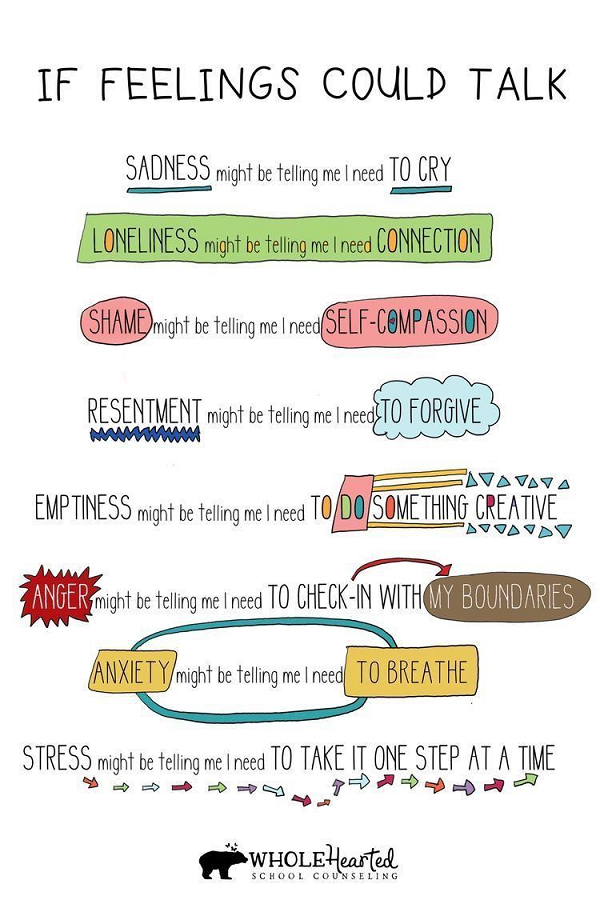
Feeling – A Vital Missing Part from the Thinker’s Head
“What do you feel now?” I ask my client Tom in the middle of our session. “I think it is, …”, he replies. “What do you feel”, I ask persistently. “Well, I think it could be …”; little baffled, Tom reiterates his thoughts.
In Tom’s mind “feeling” is a synonym of “thinking”, he(who is an engineer) lives and breathes in his head, the rest of the body underneath merely serves as a pedestal for his head! Tom is not alone. When I first came for my coach training I had a hard time with these “feeling’ questions. I didn’t know much about it other than, feeling good or bad. Then when I got it, I was either ashamed or afraid to acknowledge and share it. That was the beginning of my conscious exploration of this powerful world of feelings.

These days psychology researchers are telling us that combining emotional awareness with our rational thinking dramatically improves our effectiveness both in personal and professional front. Every emotion carries a piece of information. Anxiety means you need clarity; fear means something you care about is at stake. What is your feeling informing you right now? What could be a follow-up on that? Today I found this beatiful infographic above, If Feelings Could Talk, by Whole Hearted School Counseling.
I recently came across this article in Forbes magazine, emphasizing the same.
Simply being able to feel is a feat in itself. We often spend considerable unconscious effort ignoring what we feel because it can be painful. Who wants to be afraid or jealous or insecure? So we stifle the feelings, argue ourselves out of them, or distract ourselves with busy work or small talk.
But just because we don’t recognize a feeling doesn’t mean it goes away. In fact, it’s just the opposite. Not feeling something guarantees that it won’t go away.
Unacknowledged feelings simmer under the surface, waiting to lunge at unsuspecting, undeserving bystanders. Your manager doesn’t answer an email, which leaves you feeling vulnerable — though you don’t acknowledge it — and then you end up yelling at an employee for something unrelated. Why? Because your anger is coiled in your body, primed, tense, aching to get out. And it’s a lot safer to yell at an employee than bring up an uncomfortable complaint with a manager.
This is a particularly pernicious problem in our hyper-efficient, productivity-focused workplaces, where it often feels risky to feel any emotion at all. We’re expected to get over things, focus on the work, and not get distracted.
But repression is not an effective strategy. It’s where passive aggressiveness is born. It’s the foundation of most dysfunctional organizational politics. And it undermines the collaboration so integral to any company.
So what is a more effective strategy? Is it a good idea to get aggressive, to curse, or even to cry to show ‘n share our emotions? Not really. The same article says,
It sounds easy to know what you’re feeling and express it. But it takes great courage. I was tempted to write an email to her about my anger, which would have been safer and kept me in a feeling of power. Hurt feels more vulnerable than anger. But being able to communicate my true, vulnerable feelings made all the difference in how we related to each other.
How do you get to those feelings? Take a little time and space to ask yourself what you are really feeling. Keep asking until you sense something that feels a little dangerous, a little risky. That sensation is probably why you’re hesitant to feel it and a good sign that you’re now ready to communicate.
It’s counterintuitive: Wait to communicate until you feel vulnerable communicating. But it’s a good rule of thumb.
I see it as a two-part issue. First, identifying our true feeling and then communicating them. If you are like Tom, challenged by the feeling question, my advice is to focus on the identification part first. Practice and learn the skills of identifying and naming it. Avoid going into “someone made me angry” kind of statement. Dig deeper until you come up with a statement like, “I feel insecure”, “I feel threatened”, “I feel unacknowledged” – you get the idea.
Once you are more comfortable with naming and claiming your innermost feelings you will have more powerful choices at your disposal.
———–
Are looking to increase your emotional literacy? Checkout my EQ Assessment, Debrief, and Coaching to get started.




